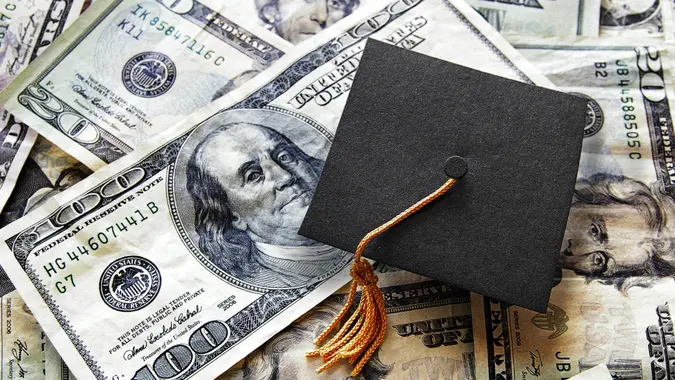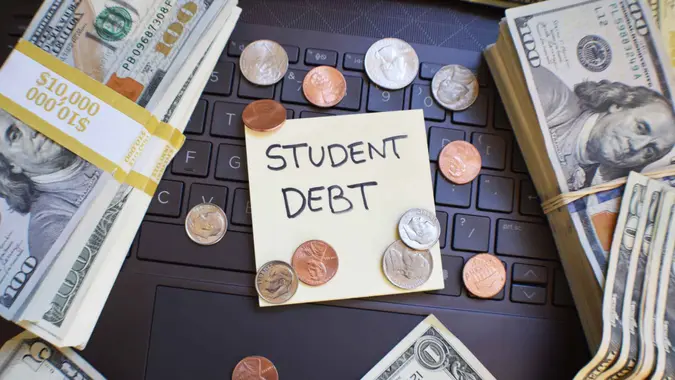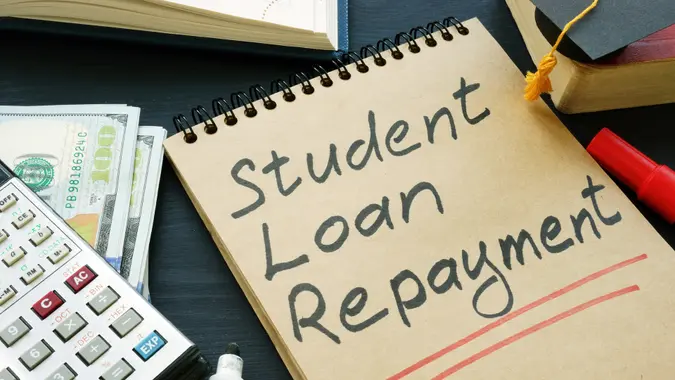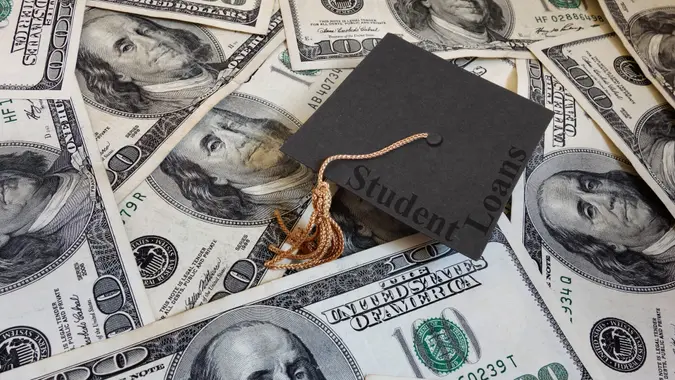Student Loans: Biden’s Plan Could Help You Qualify for Homeownership — Here’s How

Commitment to Our Readers
GOBankingRates' editorial team is committed to bringing you unbiased reviews and information. We use data-driven methodologies to evaluate financial products and services - our reviews and ratings are not influenced by advertisers. You can read more about our editorial guidelines and our products and services review methodology.

20 Years
Helping You Live Richer

Reviewed
by Experts

Trusted by
Millions of Readers
In the summer of 2023, the Department of Education under the Biden administration rolled out the Saving For a Valuable Education (SAVE) student loan repayment plan. Touted as “the most affordable repayment plan yet”, the income-driven repayment plan can result in a $0 monthly payment for some borrowers depending on their income, according to CNBC.
What’s more? Switching to the SAVE plan may help student loan borrowers qualify for a mortgage.
SAVE Can Reduce Debt-To-Income Ratio
Your debt-to-income ratio — the amount of income you earn relative to your debt — is most often calculated by dividing all your monthly debts by your monthly income. This factor is an important indication for mortgage underwriting. Since the SAVE plan results in lower monthly payments based on your income, this in turn lowers your overall debt-to-income ratio.
According to a recent report from the Center For Responsible Lending, borrowers making payments on their student debt who enroll in SAVE could see their ratio fall somewhere between 1.5% to 3.6%.
The SAVE plan increases the income exempted from your payment calculation to 225% of the poverty line, from 150%. This means that for single people, approximately the first $33,000 of your income won’t be factored into your monthly obligation. This is up from around $23,000 on other income-driven repayment plans. The good news? Even more of your income is exempt as your family size increases.
More SAVE Benefits Are to Come in July 2024
Previously, under the Revised Pay As You Earn Repayment Plan (REPAYE), borrowers had to pay 10% of their discretionary income towards student loan payments.
Starting this summer, the SAVE plan will allow borrowers to pay just 5% of their discretionary income towards student loan payments. Essentially, monthly payments will be cut in half for many borrowers. The SAVE plan has now replaced REPAYE.
Lower Monthly Payments Via SAVE Means More Cash Flow
Reduced student loan payments equals more monthly cash flow to add to your savings. Ultimately, you should be able to save money more quickly to make a down payment on a home. This is in addition to a lower debt-to-income ratio which can make it easier to qualify for a mortgage.
 Written by
Written by  Edited by
Edited by 
























